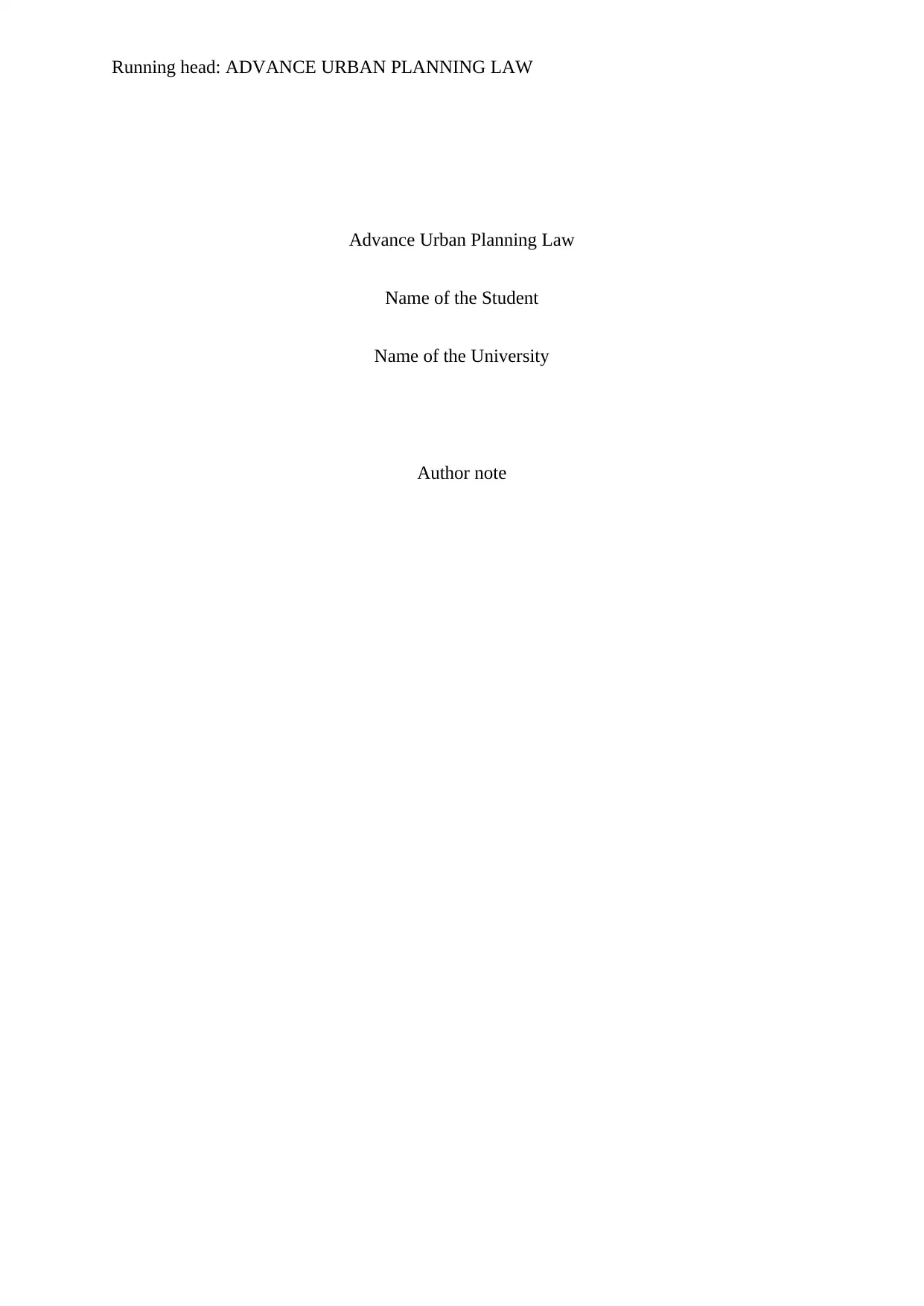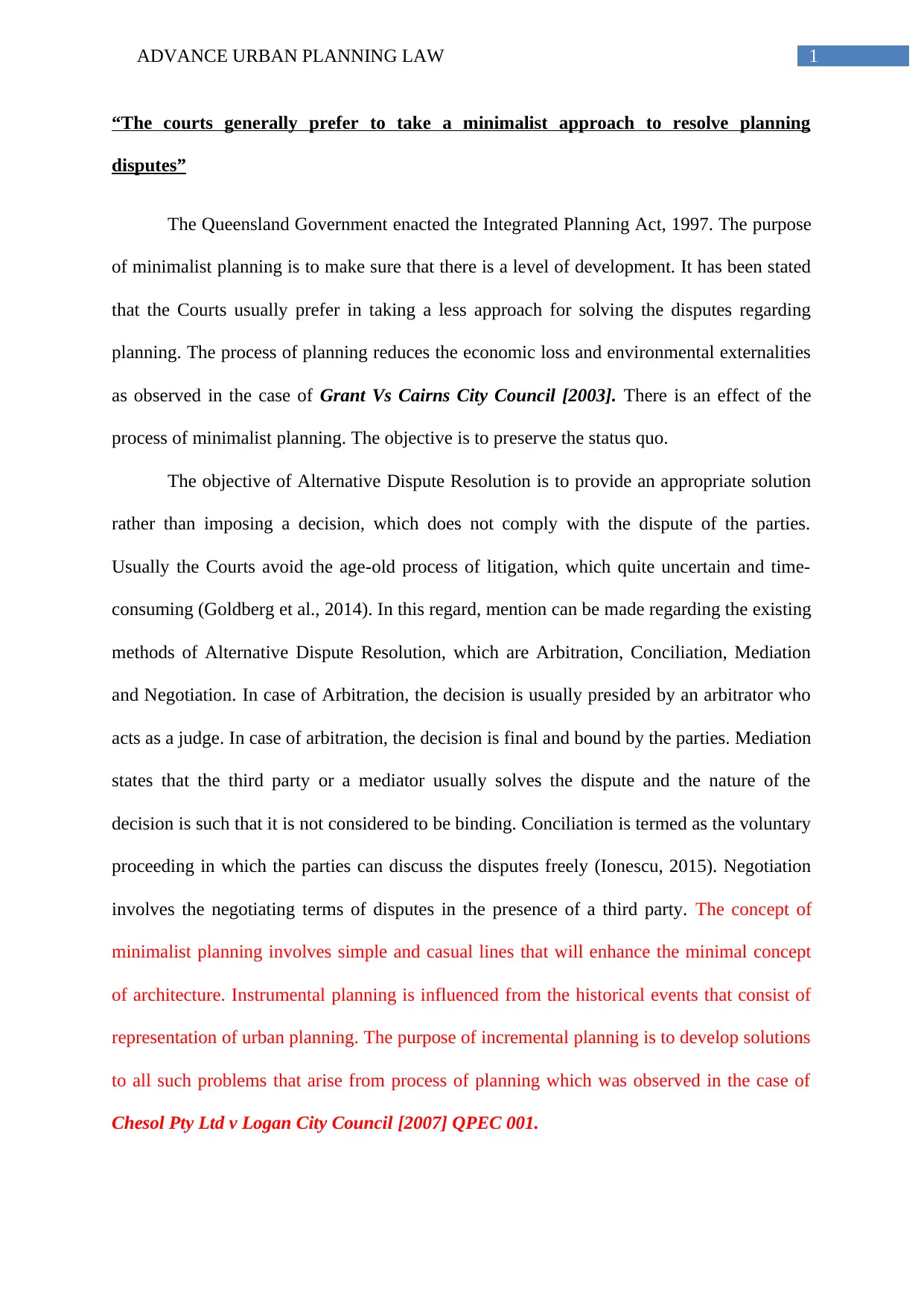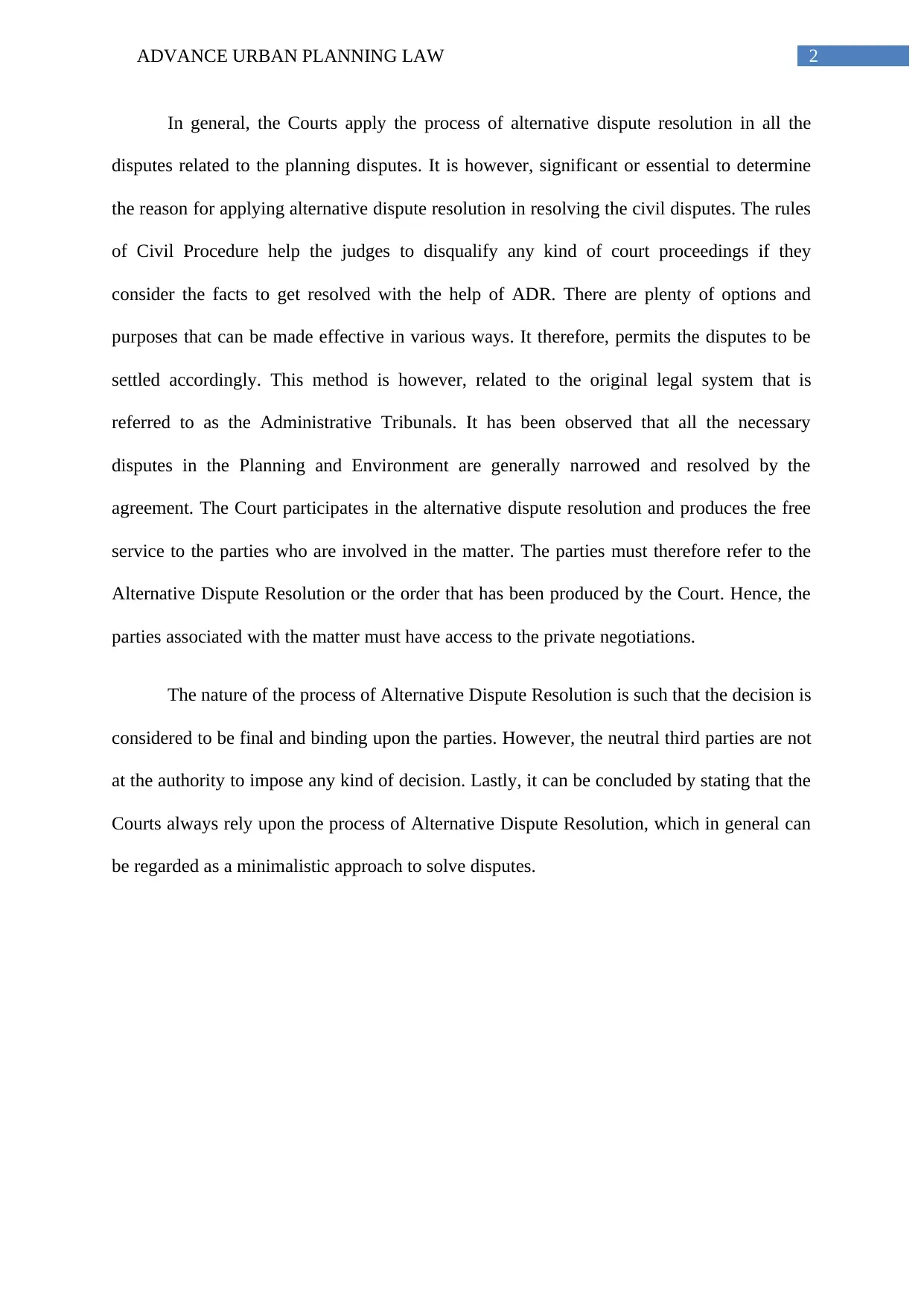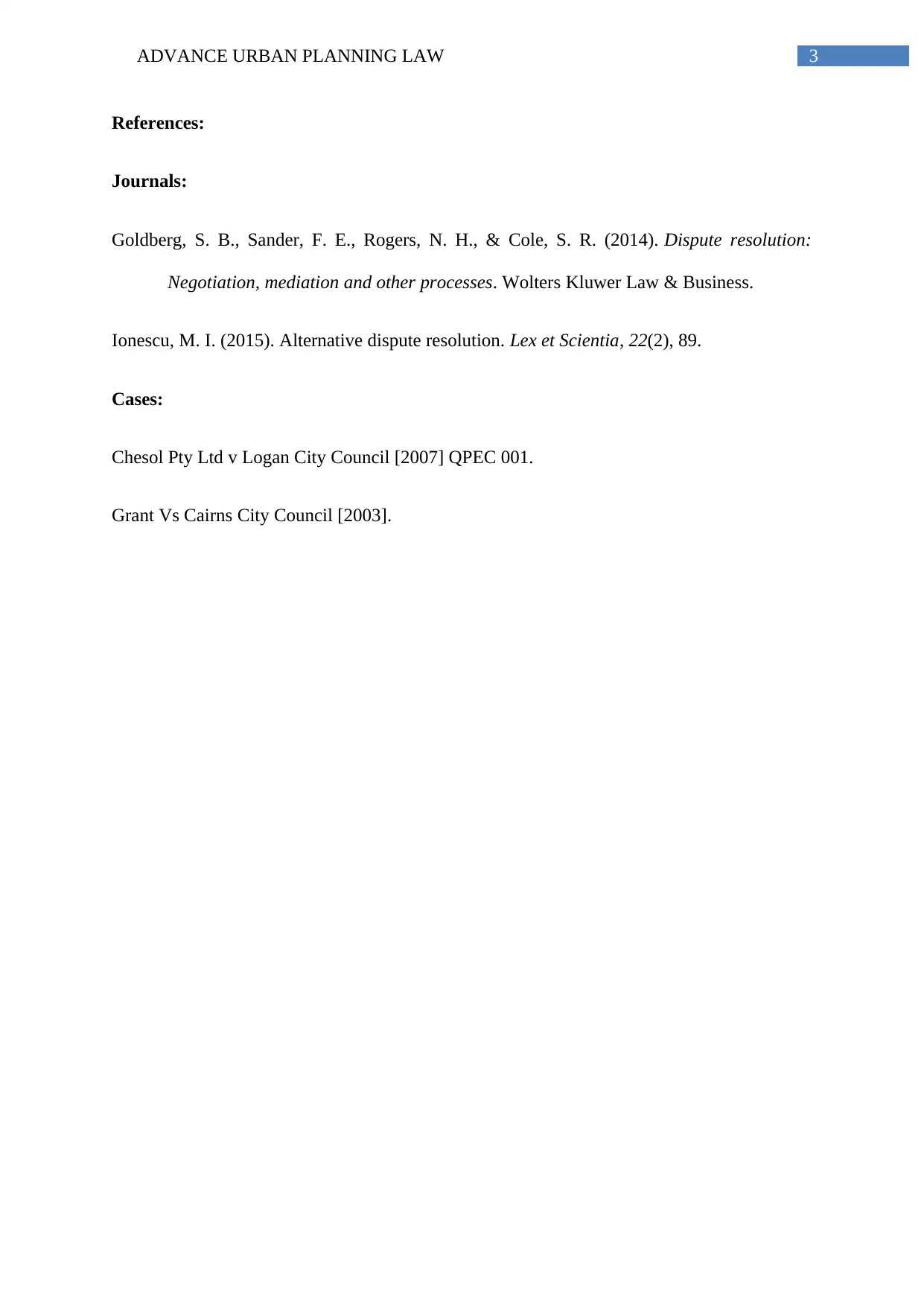Alternative Dispute Resolution in Urban Planning Law: A Report
VerifiedAdded on 2023/06/07
|4
|773
|286
Report
AI Summary
This report delves into the application of Alternative Dispute Resolution (ADR) within the framework of urban planning law, particularly focusing on the Queensland context. It examines the Integrated Planning Act 1997 and the preference of courts for a minimalist approach to resolve planning disputes, often favoring ADR methods like arbitration, mediation, and negotiation over traditional litigation. The report highlights the benefits of ADR in reducing economic loss and environmental externalities, as evidenced in cases like Grant Vs Cairns City Council [2003] and Chesol Pty Ltd v Logan City Council [2007]. It discusses the role of minimalist and incremental planning, and the courts' inclination to apply ADR to resolve planning-related civil disputes, thereby streamlining processes and offering efficient solutions. The report concludes by emphasizing the courts' reliance on ADR as a preferred method for dispute resolution in urban planning.
1 out of 4











![[object Object]](/_next/static/media/star-bottom.7253800d.svg)